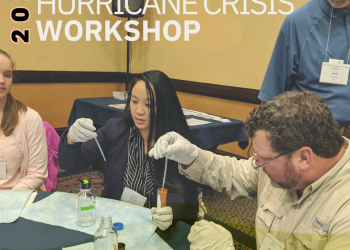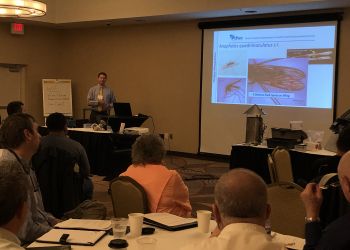This blog was post was originally posted on National Recreation and Parks Association.
Tick-borne diseases are increasingly threatening the health of people in the United States. In 2018 alone, state and local health departments reported 47,743 cases of tick-borne disease to the Centers for Disease Control and Prevention, with Lyme disease accounting for approximately 70 percent of these cases. The geographic and seasonal distribution of vector populations — including mosquitoes, ticks and rodents — and the bacterial and viral diseases they can carry are influenced by several factors, such as climate, land use and human responses to disease risk. Increasing temperatures across the country can contribute to longer warm seasons and an expanding distribution of mosquitoes and ticks. As summer arrives, more people will be heading out to enjoy the many parks, trails and other open spaces in their communities, further increasing their potential contact with ticks and other disease-carrying vectors. Local health departments (LHDs) and other local vector-control organizations play a crucial role in protecting communities from mosquito- and tick-borne illnesses year-round, but they cannot do it alone. Park and recreation professionals are encouraged to partner with their local public health and local vector-control organizations to join the fight against vector-borne disease.
The National Association of County and City Health Officials (NACCHO), which serves as a leader, partner and advocate for the nation’s nearly 3,000 LHDs, has a vector control program that enhances the capacity of LHDs and other local vector-control organizations to detect and respond to vector-borne disease threats. NACCHO supports these local programs in protecting their communities from vector-borne disease through the development and promotion of tools and resources, research, policy statements, stories from the field and more.
Shared Goals
Local public health and local park and recreation agencies share a goal of improving the quality of life for their communities. They both promote access to and use of community parks, trails and other open spaces to improve health outcomes. Ensuring that members of the community can continue to safely enjoy these spaces is a priority for not only local park and recreation agencies, but also local public health.
Building Partnerships
Establishing a partnership with a local public health department or local vector-control organization will help ensure that local park and recreation agencies are prepared to join the fight against vector-borne disease and to actively address this emerging public health threat head on. A few key activities that can help park and recreation agencies engage with their local health departments and/or other local vector-control organizations on vector-related issues include:
Stakeholder Meetings
Attending a stakeholder meeting or inviting your local vector program representative to your next stakeholder meeting can provide a space to share information and opportunities for collaboration and to discuss important activities occurring throughout your community. Stakeholder meetings are also a great opportunity to get more information on tick activity and recommended prevention measures.
Joint Training
Your local health department or vector control program may periodically host training events that provide information on tick bite prevention, tick-borne diseases, pesticides or other vector-related topics. Attending a training held by your local health department or local vector program can help you stay informed about the ticks in your area and the actions that you can take to protect yourself and your community from disease.
Memorandums of Understanding (MOUs)
Developing an MOU with your local vector program can lay the groundwork for a long-term partnership and ensure that tick management activities are streamlined. Ideally, MOUs should be developed in advance of when tick activity is at its peak. This document will help to define how you can collaborate with your local vector control program and avoid interagency conflict and confusion in implementing tick management activities. Such activities as routine surveillance, pesticide treatments and the sharing of resources should all be included when developing an MOU. Tick surveillance activities are especially important, as they provide jurisdictions with the information needed to assess tickborne disease risks, develop suitable prevention programs and ultimately reduce illness and death.
Partnerships between local public health and park and recreation agencies make sense. Make a call to your local public health department or other local vector-control organization and begin the conversation on eradicating vector-borne disease in your community.





